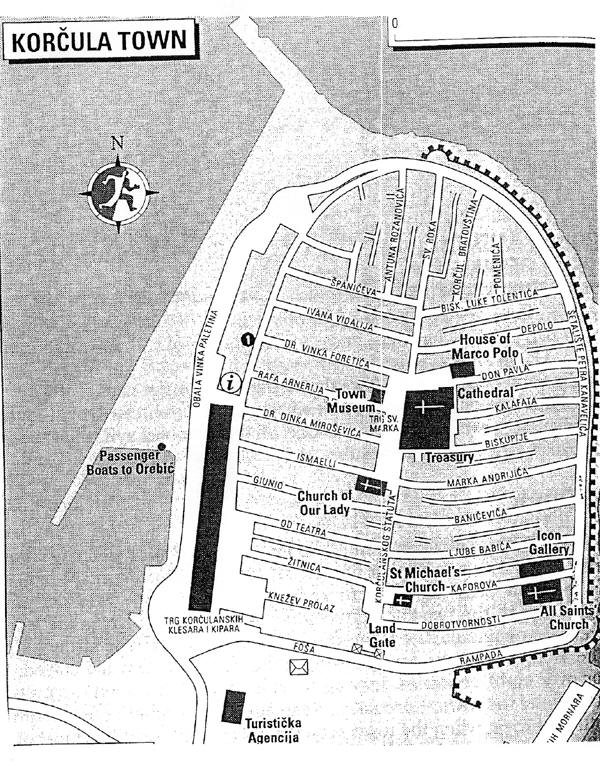 |
|
| The town of
Korcula, the historical center of the island, has a beautiful
location in the Peljesac Channel. It is also known for its
outstanding cultural and historical heritage and a long tradition in
seafaring, shipbuilding and stone masonry. It is the birthplace of
the adventurer and traveler Marco Polo. Today Korcula is an
important tourist center. Tourism has a long tradition on the
island. The first modern hotel, Korcula, was opened in 1912, in a
building in 1871. Korcula's gastronomic offerings include famous fish specialties and exquisite, top-class local wines (Posip, Rukatac, Grk, Plavac), which is the reason Korcula is also called "the island of wines". The local cuisine is also famous for traditional cakes and sweets such as "cukarini", "krostule" and "prikle". The most important cultural event is the traditional chivalrous game called "Moreska". It has performed in Korcula since the 15th century and is of Spanish origin. It is a battle between the army of the White King and the army of the Black King, who fight for the princess abducted by the Black King. After a fierce fight with swords, in seven battle figures and dramatic dialogue, the White King defeats the Black King and sets the princess free. The fight is accompanied by a battle march performed by a brass band. Moreska is performed every year on the 29th of July, together with the celebration of St. Todor. A neo-Baroque stairway (1907) leads from the pier along the open loggia (1584) to the old part of the town. In the middle of the square is the cathedral of Sf. Mark (only the apses of three naves have been preserved of the original cathedral from the 14th c.). This Gothic structure was finished at the end of the 15th century in the transitional Gothic-Renaissance style. Opposite the cathedral is the deserted Arneri palace, built in the ornate Gothic style, with a nice Renaissance cloister. Next to it is the Gabrielis palace, built in the Renaissance style (16th c.), in which in 1957 the Town Museum was opened, with various exhibits related to shipbuilding, seafaring and stone masonry of Korcula, and an art gallery. Next to the cathedral is the Bishop's palace with the rich Abbey Treasury Korcula, a town and port on the northeastern of the island of Korcula, is situated on a small peninsula, which is connected with the island by a narrow isthmus with population of 3,232. The surrounding coastal area is covered with pine forests. East of the port there is a small group of islets. The island's economy is based on farming, wine production, olives and fruit, fishing, shipbuilding, stone processing and tourism including nautical tourism. The regional road connects the town of Korcula with all major places on the island. |
|
 |
|
|
10/10/08 |
|